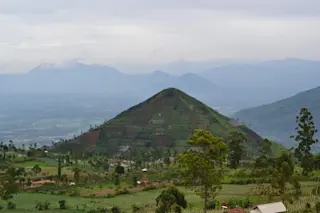Jesuit church ruins from the 17th century, like the São Miguel das Missões, were built with clay bricks that contain magnetite, which realigned with earth's magnetic field when it was fired in kilns. (Credit: Wikimedia Commons) It seems safe to say that the laborers firing clay pavers, bricks and tiles to build the Jesuit mission of Santo Ângelo over 300 years ago had no idea that their toils might someday bear relevance to spacecraft orbiting 600 miles above what is now southern Brazil. As the bricks and pavers were fired in kilns, magnetite in the clay abandoned its inherent magnetic properties and realigned in response to the magnetic forces exerted by the earth itself. The point at which this occurs – 580 degrees Celsius, in the case of magnetite – is known as the Curie point. After these building materials cooled and were stacked to form a church, school and ...
17th-century Ruins Could Unravel Mysteries of Earth’s Magnetic Field
Explore the Jesuit church ruins from the 17th century and their historical significance in Brazil's magnetic field studies.
More on Discover
Stay Curious
SubscribeTo The Magazine
Save up to 40% off the cover price when you subscribe to Discover magazine.
Subscribe













